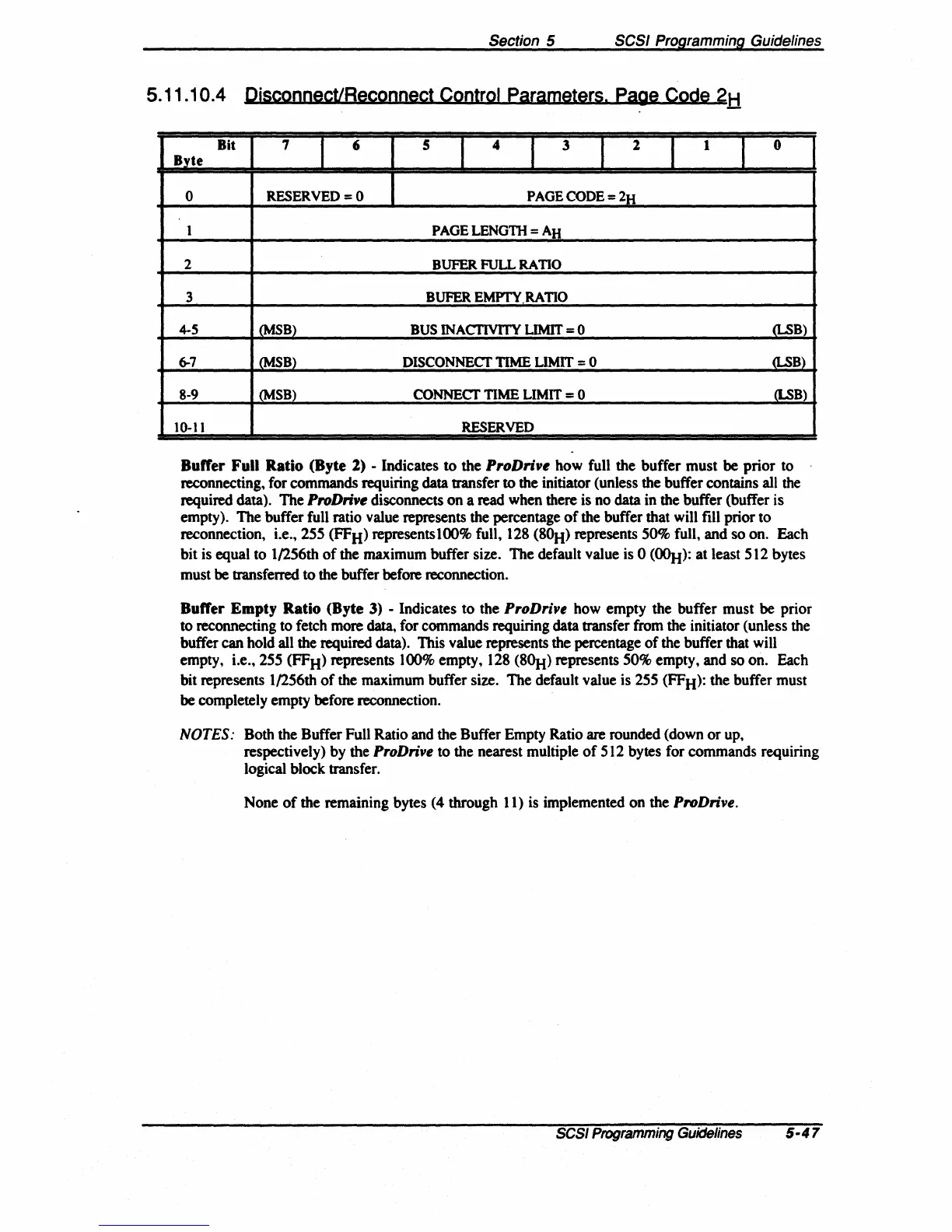Section 5 SCSI Programming Guidelines
5.11.10.4 DjsconnecUReconnect Control Parameters. page Code
2H
Bit
7
I
6
5
I
4
I
3
I
2
I
1
I
0
Byte
0 RESERVED
=0
PAGE
CODE
=
2H
1
PAGE
LENGTIi =
AH
2
BUPER
FULL
RATIO
3
BUFER
EMPTY,RATIO
4-5
(MSB)
BUS
INACTIVITY LIMlT = 0
(LSB)
~7
_<MSB)
DISCONNECT TIME LIMIT = 0
(LSB)
8-9
(MSB)
CONNECT TIME LIMIT = 0
~B)
10-11
RESERVED
Buffer Full Ratio (Byte 2) - Indicates
to
the ProDrlve how full the buffer must
be
prior to
reconnecting, for commands requiring data transfer
to
the initiator (unless the buffer contains all the
required data). The
ProDril'e disconnects
on
a
read
when there is no data in the buffer (buffer is
empty). The buffer full ratio value represents the percentage
of
the buffer that will fill prior to
reconnection, i.e., 255 (FFH) representslOO% full, 128
(80H) represents 50% full, and so on. Each
bit is equal to 1/256th
of
the maximum buffer size. The default value is 0
(~):
at least 512 bytes
must be transferred
to
the buffer before reconnection.
Buffer Empty Ratio (Byte
3)
- Indicates to the ProDrivt how empty the buffer must
be
prior
to reconnecting to fetch more
data, for commands requiring data transfer from the initiator (unless the
buffer can hold all the required data). This value represents the percentage
of
the buffer that will
empty, i.e., 255 (FFH) represents
100% empty, 128 (80JI) represents 50% empty, and so on. Each
bit represents 1/256th
of
the maximum buffer size. The default value is 255 (FFH): the buffer must
be
completely empty before reconnection.
NOTES: Both the Buffer Full Ratio and the Buffer Empty Ratio are rounded (down
or
up,
respectively) by the
ProDrivt to the nearest multiple
of
512 bytes for commands requiring
logical block transfer.
None
of
the remaining bytes (4 through 11) is implemented on the ProDrivt.
SCSI
Programming
Guidelines
5·47

